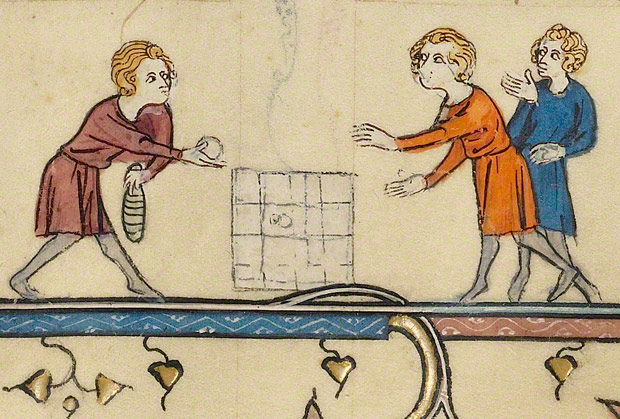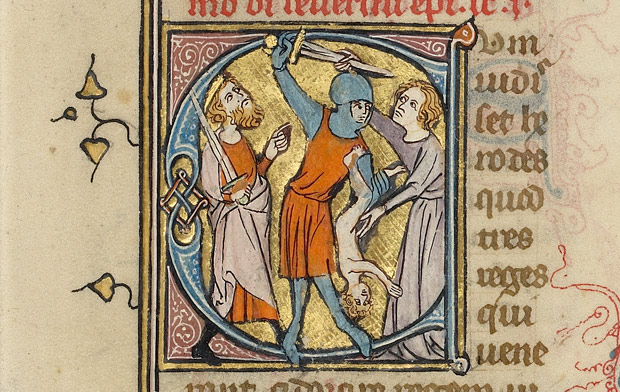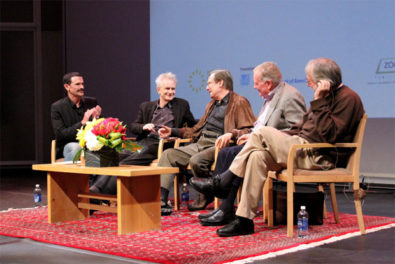The current exhibition Gothic Grandeur abounds with images in the margin. These charming and often humorous additions, called marginalia (Latin for “things in the margins”), were introduced to manuscript illumination during the Gothic era.

Initial C: The Massacre of the Innocents in a breviary, French, about 1320–25. Tempera colors, gold leaf, and ink on parchment, each page 6 9/16 x 4 3/8 in. The J. Paul Getty Museum, Ms. Ludwig IX 2, fol. 142
In the lower border of this French Gothic devotional book, three boys play a board game; in the illuminated initial in the page’s left column, a soldier prepares to slay a male baby at a king’s command—an illustration of the biblical Massacre of the Innocents.
It is difficult to tell what board game the boys in the border play. In the Middle Ages, both strategy games like chess and alquerque (akin to checkers) and games of chance like knucklebones and hazard (both played with a form of dice) were popular.

Elsewhere in the borders of other pages in this manuscript, games such as bowling and hide-and-seek can be found, and most seem to have little resonance with other images on the page. Here, however, the pairing of young boys playing a game in the margin with a male child being slaughtered in the initial may have been intended as a purposeful contrast between the innocence that should characterize childhood and the grim reality that sometimes intrudes.





An interesting examination of a medieval manuscript… I too, find myself wondering at the type game being played in the lower border. Perhaps some form of Kegel? The board game depicted in the same area does indeed look like some early form of draughts. Games of this nature would have been popular on the continent long before they appeared in England in the late 1500’s.
One wonders why they they didn’t depict a chess game when making a comparison to games of strategy and real warfare? I suspect the game of chess was so closely matched to the actual strategies involved in war that a depiction of a less militant game pressed the contrast between innocence and the harsh realities of medieval battle.
Dear Sir or Madame,
would you mind you tell me the name of the manuscript so that I can quote it in my uni seminar paper?
Thank you in advance, kind regards
Carolin Schroeter
Dear Carolin, Certainly. This illumination comes from a book without a proper name. It is a breviary (a book of songs and readings for the Divine Office). The name of the illuminator is also unknown. Here is a full caption for the entire book itself:
Breviary, unknown illuminator, Paris, France, about 1320–25. Tempera colors, gold leaf, and ink on parchment bound between pasteboard covered with brown morocco, each leaf 6 9/16 x 4 3/8 in. (16.7 x 11.1 cm). The J. Paul Getty Museum, Ms. Ludwig IX 2 (83.ML.98.377)
Here is a link in our database with a full list of leaves as well as its exhibition history. Thank you for your interest in our collection! —Annelisa, Iris editor